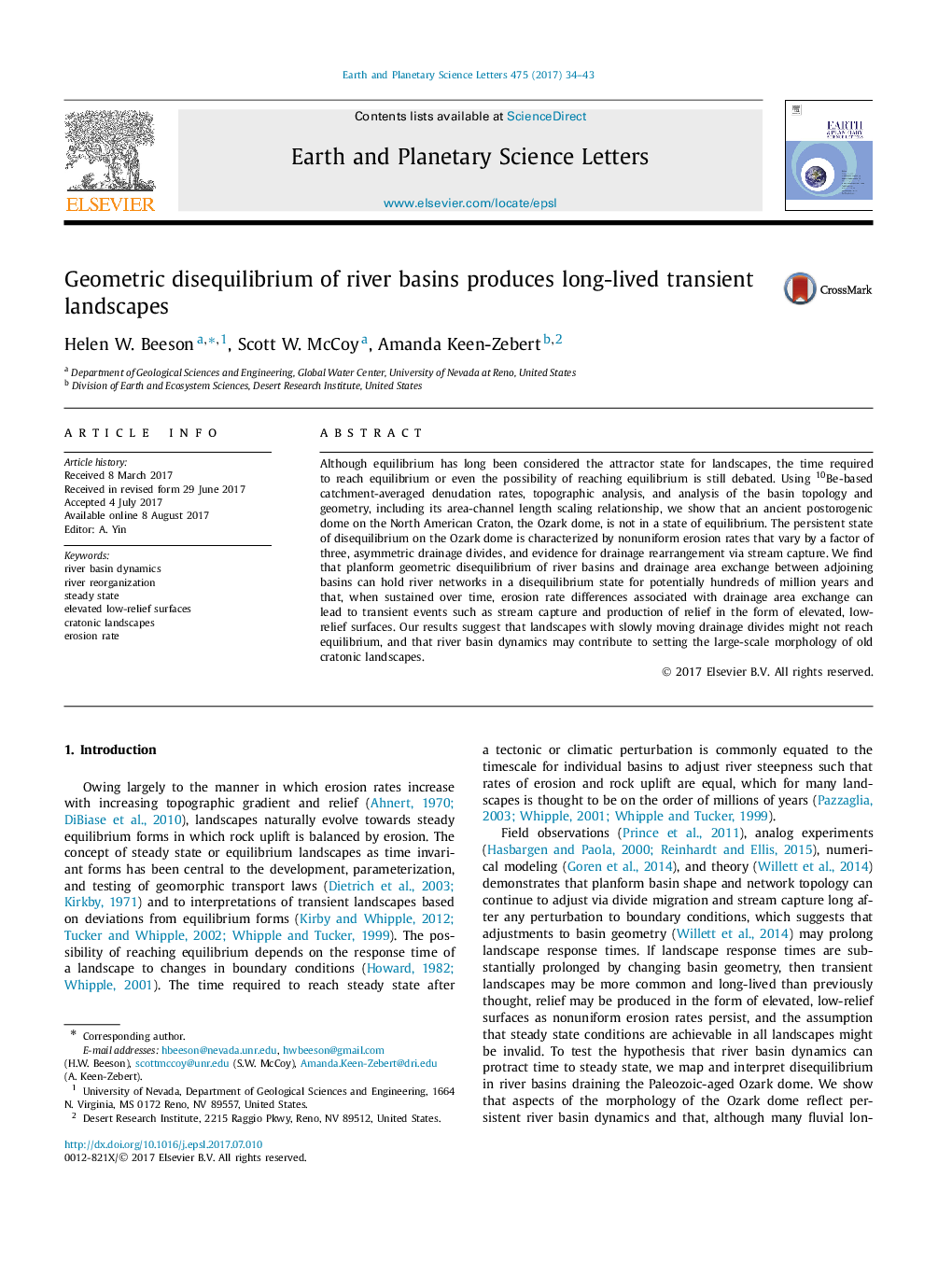| Article ID | Journal | Published Year | Pages | File Type |
|---|---|---|---|---|
| 5779654 | Earth and Planetary Science Letters | 2017 | 10 Pages |
Abstract
Although equilibrium has long been considered the attractor state for landscapes, the time required to reach equilibrium or even the possibility of reaching equilibrium is still debated. Using 10Be-based catchment-averaged denudation rates, topographic analysis, and analysis of the basin topology and geometry, including its area-channel length scaling relationship, we show that an ancient postorogenic dome on the North American Craton, the Ozark dome, is not in a state of equilibrium. The persistent state of disequilibrium on the Ozark dome is characterized by nonuniform erosion rates that vary by a factor of three, asymmetric drainage divides, and evidence for drainage rearrangement via stream capture. We find that planform geometric disequilibrium of river basins and drainage area exchange between adjoining basins can hold river networks in a disequilibrium state for potentially hundreds of million years and that, when sustained over time, erosion rate differences associated with drainage area exchange can lead to transient events such as stream capture and production of relief in the form of elevated, low-relief surfaces. Our results suggest that landscapes with slowly moving drainage divides might not reach equilibrium, and that river basin dynamics may contribute to setting the large-scale morphology of old cratonic landscapes.
Keywords
Related Topics
Physical Sciences and Engineering
Earth and Planetary Sciences
Earth and Planetary Sciences (General)
Authors
Helen W. Beeson, Scott W. McCoy, Amanda Keen-Zebert,
